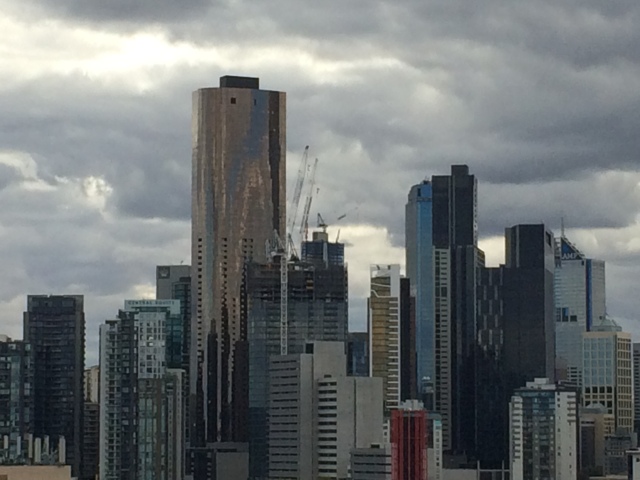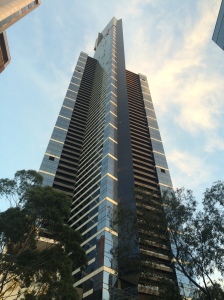In May, Victorian Planning Minister Richard Wynne released the government’s discussion paper entitled Better Apartments. This document is the next stage of the process that began under the previous government looking at how to improve the design quality of Victoria’s apartment dwellings. The Office of the Victorian Government Architect (OVGA) has been concerned for some time about the poor quality of amenity offered in new apartment developments in Victoria. As identified in the introduction of the discussion paper, “The issue of apartment amenity was also raised by local government, architectural and industry bodies, and the media during consultation on Plan Melbourne.”
This discussion is well overdue with record apartment development in Victoria occurring since 2009. It is clear looking forward that apartments will be a big part of our capital city and increasingly our regional centres. This is undoubtedly a good thing as it is an opportunity for our cities to become less car reliant and more sustainable into the future.
In Sydney, minimum apartment design standards have been in place for quite some time. In 2002 under the leadership of Bob Carr, New South Wales introduced State Environment Planning Policy 65 (SEPP 65). Whilst it is no doubt a controversial debate, it would appear that the reforms have been successful in their purpose of improving the built outcomes of apartments in New South Wales. In this ArchitectureAU article by professors Kerry and Lindsay Clare, they identify that the “Research, feedback and anecdotal evidence all point to the policy’s success”.
What is Victoria’s Better Apartments Paper About?
This paper is about seeking feedback from the property development industry and importantly apartment dwellers themselves about what the issues are and what should be done about them. The paper explains the four different mechanisms that the government has to control apartment development. It must be emphasised that the government is not restricted to using just one tool for every issue. Instead it could tailor a combination of control measures specifically to the issues at hand rather than trying a blanket catch everything approach. The tools at hand are as follows:
- Regulation – Mandated standards via planning schemes or the National Construction Code (NCC)
- Performance based requirements – Objectives, standards and decision guidelines, similar to the way that ResCode works for housing 3 storeys and under.
- Policy – Provision of a guide to good practice referred to in the planning scheme.
- Market based methods – Focus on better educating the buying public.
What are the issues that have been identified?
Daylight and sunlight
The benefits of daylight and sunlight in apartments generally boils down to two aspects. The health and well being of the occupants, and the energy efficiency of the apartment. Apartments which have an overall smaller area of windows will require artificial lighting to be running more often. Apartments without direct sunlight cannot directly use this naturally available resource to help with heating, therefore requiring more energy to artificially heat.
There are currently requirements for day lighting to habitable rooms in apartments from the NCC. There is also an often used work around called ‘borrowed light’. This provision allows for a habitable room to ‘borrow’ the amenity from another room via a large door or glazed panels. This issue currently has substantial planning uncertainty attached to it with it being overlooked in some jurisdictions and close to outlawed in others.
19% of respondents to the Rate My Building apartment survey indicated that they feel their apartment has insufficient windows for light and ventilation (out of 140 responses)
Space
One of the primary discussion points around apartment design standards in Victoria is the size of apartments being built. 79% of Victoria’s one bedroom apartments currently marketed or under construction are below the minimum size required in New South Wales under the Sepp 65 laws. There are many issues that reside within this overall discussion point. The dimensions of an apartment can affect the flexibility, adaptability and liveability of that dwelling. The dimension of the ceiling height also has an impact the penetration of daylight into the apartment.
There is also the question about the diversity in types of apartments that are being supplied to the market. This nominally fits into this point although it could easily be its own separate issue.
Minimum sizes will be discussed in further detail in part 2 of this post.
Outlook
Whilst one might immediately start imagining apartments with brilliant city views, this point is more about making sure that privacy between apartment buildings is not undermined. There are examples in areas such as Melbourne’s Southbank where large apartment towers have been permitted to be constructed very close together. This places excessive reliance upon internal blinds or an exhibitionist personality.
The other issue with outlook is to enable passive surveillance to the street front. By having apartments at the lower levels with street facing windows, the street can feel significantly at night. This aspect is typically dealt with very effectively at a local council planning level and therefore may not require much in the way of policy or regulatory intervention.
Natural Ventilation
Ventilation of rooms is critical to providing a sufficient level of internal air quality. In poorly ventilated spaces the air quality can become a health hazard. Giving occupants the ability to open and close windows can reduce the occupant’s reliance upon mechanical ventilation. Ventilation to habitable rooms is dealt with in a similar way to daylight, in that it is controlled in the NCC but with a similar borrowed ventilation clause available to the developer who can get planning approval.
Noise
The key issues with excessive noise entering apartments is that of health and wellbeing, sleep disturbance and privacy. When we think of apartments with poor acoustics we often think about the noisy neighbours that can be easily heard through the ‘paper thin’ walls. Australia wide data from 140 Rate My Building survey responses suggest however that noise from the street is just as important an issue as noise from neighbours. Currently controlling noise from neighbouring dwellings in the same building is regulated through the National Construction Code. There are currently no mandatory provisions for street noise insulation in apartments. That being said, some apartment developments are required to achieve a minimum level of acoustic insulation via councils imposing specific planning permit conditions.
Outdoor space
Outdoor space is often addressed in apartments via the balcony. Typically the rule of thumb is to have a minimum of 8 square metres with a minimum linear dimension of 1.6 metres. Outdoor space is often used when entertaining guests and is also important for those with children. The provision of outdoor space can become a difficult proposition once an apartment tower gets above a certain height due to excessive wind speeds. This is where well designed communal open space should be utilized to make up the deficit.
Adaptability
Apartment buildings and in particular apartment towers once built will need to last a very long time. Typically these towers are sold to hundreds of different parties each with a very small stake. This makes demolition and rebuilding virtually impossible if requirements change. Therefore we must be extremely careful about how we design these structures so that they can adapt to future needs. Can a basement car park be repurposed for another use? Can walls be removed to join two or three apartments into a single dwelling? Can an apartment adapt to service the needs of a disabled person? These are clearly aspects of apartment design that are not able to be addressed by the free market and need further government guidance.
Landscape
The use of landscaping within and around an apartment development has significant benefits to the wider city by reducing the urban heat island effect which occurs during our increasingly intense summer heatwaves. This urban heat island effect might seem like a fluffy term, however it contributes to hundreds of heat related deaths every year in our capital cities.
There is also substantial benefit in improving the vitality of the public realm through well designed vegetated areas.
Universal Design
Architecture is for everyone, apartments should be for everyone too. There are clear statistics on how many people in our society live with various disabilities. There are also mathematical models which can predict how these numbers will change over time in our aging society. Clearly there is an urgency then to make sure that an equivalent percentage of apartments provided within a development are suitable to be adapted should the need arise. This is currently handled more or less on a council by council basis. A state wide policy would provide certainty to all parties involved and make the inner city a viable choice for those with a disability.
Energy and resources
The question raised by this topic is where the bar should be set in terms of energy efficiency. There are already well considered processes within the NCC to mandate a minimum level of energy efficiency. A solution to improve apartments here may be as simple as adjusting the benchmark. An additional consideration may be to mandate renewable energy generation for a substantial portion of the common area energy requirements.
Waste
“Apartment developments often have low resource recovery rates compared to single dwellings. This can be due to a lack of access for residents to recycling infrastructure and services”.
Better Apartments Discussion paper
Waste Management is an area which is also in the better apartments ‘needs improvement’ category. The relevant objective here is to increase the level of recycling by residents. Recycling needs to be made as easy as possible by providing facilities to separate the waste. This might be as simply as putting in separate waste and recycling chutes in towers.
Car parking
Car parking is a common area of dispute within the planning system. From a developer’s point of view if they provide too much parking they will be criticised for increasing traffic. However if they provide too little parking they will be criticised for causing a parking problem on the local streets. It would seem the correct approach to car parking may well be to enable a site by site assessment that takes into consideration other transport options such as public transport and car sharing facilities. Local councils are already well placed to make the final decision regarding car parking, although perhaps this could be further enhanced by a state policy aimed at minimizing car reliance where possible.
Entry and circulation
The issues around the entry lobby and circulation spaces generally reside around a sense of address, visibility and safety. Amongst the other discussion points, this one would seem less critical than others that are more directly related to human health, environmental health and building performance. It is not necessarily apparent that a corridor that has fewer apartment front doors is necessarily safer than one that has more. Indeed it may be quite possible that the reverse is actually true. There are some energy efficiency bonuses available to naturally ventilate an entry corridor. It is also Clear that hallways which terminate with views to the outside are superior from a user experience point of view, however as such this might be an area suitable for the free market to judge via price.
Part 2 of the Red+Black discussion on Victoria’s Push for Better Apartments will look further into the merits of improving apartment design standards.
Architecture is for Everyone
Contact Us
Feel free to contact us with questions or feedback:
Latest Post
- A crisis of trust February 10, 2020
- The Square and the Park. October 28, 2019
- Fixing The Building Industry – A Wishlist September 12, 2019
- 2019 NATIONAL CONFERENCE DAY 2 June 24, 2019
- 2019 National Conference Day 1 June 22, 2019





Leave a Reply